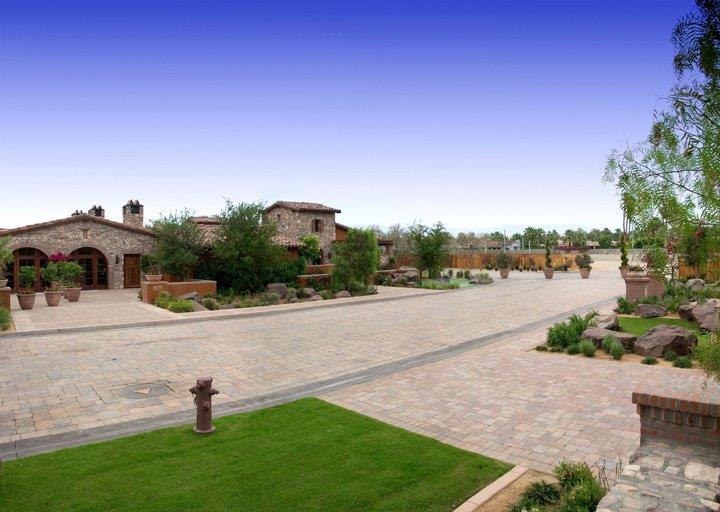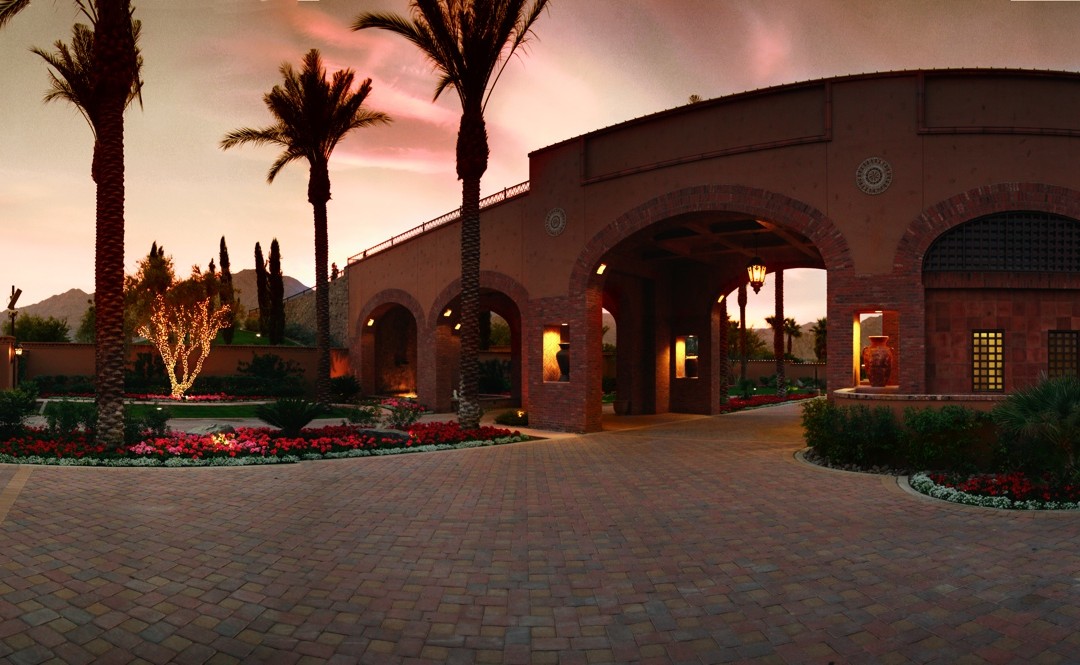You never get a second change to make a good first impression, and when it comes to home value this is especially true. Years ago it was commonly thought that the kitchen and bath were the most important place to put your money when remodeling to increase the value of your home. In the past decade however, that has changed and almost every expert’s recommendations (including an article in the Wall Street Journal) now starts with curb appeal at the top of the list.
For this reason, the use of interlocking pavers in driveways, front walkways, and entries has skyrocketed. Most new communities now incorporate the front yard pavers as standard while the backyard landscaping, pool and pavers may be standard or options. Many older communities facing costly HOA repairs to cracked concrete driveways have already instituted driveway replacement plans either replacing all of their driveways with pavers in phases or facilitating group discounts and/or incentives to encourage individual homeowners to replace the driveway and thus relieving the HOA of any liability for the cracked driveways in the future.

But does curb appeal really start at the curb? Don’t visitors get their first impression at the entry of the community? What do the streets say about the property values? Are they cracked and resealed? Do they bleed black tire tracks onto the driveways and garages?
Developers have long known that paver streets sell homes and add value whether it be the high end custom home community that wants the highest value, a high density condo project that needs to look like a warm village rather than a cramped and sterile environment, or the multifamily community that doesn’t want its new project to feel cold and foreign but rather look like it has always been a part of the region forever. Municipalities have woven millions of square feet of interlocking paver streets into the urban fabric of Vancouver’s Olympic Village, North Bay Ontario’s downtown, Seattle’s downtown, Chicago’s Green Alleys, Hong Kong’s airport runways and the Los Angeles Zoo, just to name a few. Europe may have more pavers than asphalt in their streets.

But can only new communities afford pavers? A recent study performed by Robert Tuvel, a Southern California reserve fund consultant, of the prestigious country club Bighorn, found that over the life cycle of the pavement, interlocking paver streets are less expensive then asphalt streets if you incorporate the cost of maintenance. This is substantiated by an ICPI (Interlocking Concrete Pavement Institute) study with the same finding.
Bighorn has over seven miles of interlocking pavement streets that are over fifteen years old which looks more expensive now than when it was originally put in. Seriously. Pavers directly out of the kiln are called “raw” or “non-tumbled”. This is the least expensive paver finish. For approximately $1.00 more per square foot you can purchase an enhanced finish “shot-blast”. Bighorn has, over the years, utilized the European tradition of maintaining their streets by periodically spreading sand over the top and allowing the residents to drive over it for a month and then sweeping up the sand. This re-sands the pavers, tightening the joints as well as absorbing oil and stains. Over many years of doings this (and they do not do it every year) it has gently given them a more expensive shot-blast finish.
The lifecycle of interlocking pavers is now longer than thirty years and may be pushing up to forty years. It is important to note that the quality of the installation and the knowledge of the industry technical specifications will impact the life span of the pavement. Any installer performing street work should not only have a contractor’s license for this specific trade, but must have an ICPI Commercial certification, and provide references from other jobs of similar size and scope that are a minimum of five years old. These jobs should be inspected. Since we know that pavers have more load-bearing than concrete, will not crack, do not need resealing, and come in endless colors, designs and architectural styles from contemporary to old world, you may never look at asphalt the same ever again.



What a great blog post. It is amazing to see how remodeling to increase the value of your home has changed from bathroom and kitchen to curb appeal. We totally agree that interlocking paver driveways bring up the value of the homes/commercial space of neighborhoods and or properties that have been installed in drastically.
Also, credentials and experienced interlocking paver contractors should being installing and maintaining pavers professionally, which brings longer life and less expense in the long run. No asphalt means less cracks, maintenance and longer life of paver street driveways.
Thank you for sharing your insights in this amazing post. Looking for the next post.